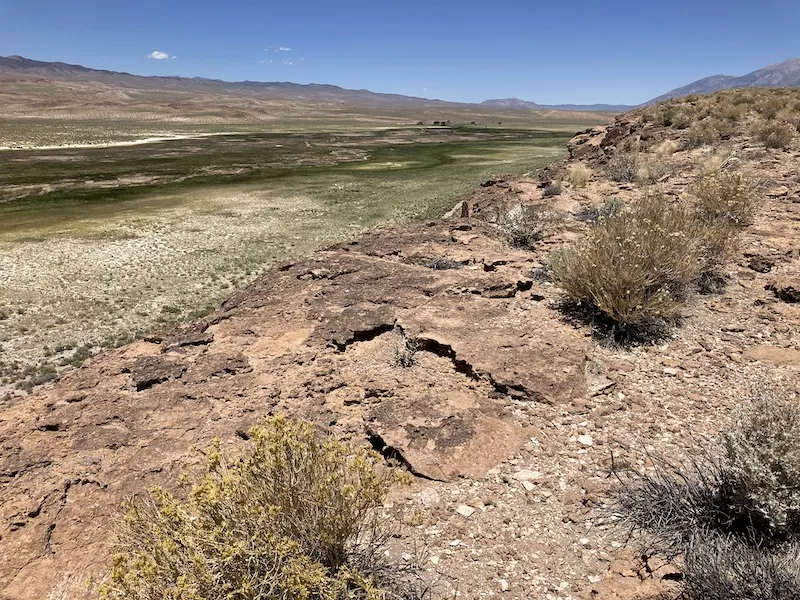The Northeast Spring hit an all-time low in August, September and October of 2022. There was no water flowing through the flume. The spring started flowing again with two good snowfall years in a row. The total monthly flow reached a high of 13.28 acre-feet in April 2023 after the unprecedented winter of 2022-2023. It then dropped down to 5.98 acre-feet by September 2023. Compare this to the flows of the 1940s which were in the 125-143 acre-feet/month range. The Northeast Spring was the most abundant source of water for Fish Slough. The other two main springs are the Northwest Spring and the BLM Spring. The Northeast and Northwest Springs are at the northern end of Fish Slough. Water flows to the south where there are two gauges that show how much water comes out of the slough and into the Owens River into the hands of LADWP. In August 2022 it was 84.4 acre-feet/month when the Northeast Spring stopped flowing. In September 2023 it was 117.89 acre-feet/month. That is an insignificant amount of water lost to the LA Aqueduct, but significant to the Tri-Valley (Benton, Hammil, and Chalfant) ranchers when it can be as much as 1,881 acre-feet/year. They see it as their water going to Los Angeles. A bitter pill to swallow and rightly so.
A Request for Proposal (RFP) went out for bid the first week in July to hire a hydrologist to prepare a groundwater model for the Tri-Valley which would determine what is a sustainable level for groundwater pumping and how much groundwater pumping in the Tri-Valley is impacting Fish Slough. Three applications were received by the due date of August 16. A recent paper by the Desert Research Institute points to groundwater pumping in Hammil Valley having the strongest influence on the decline in the Northeast Spring. This is the second paper coming to the same conclusion.
How much water does Fish Slough need to be a healthy ecosystem? How much does groundwater pumping in the Tri-Valley need to be curtailed to achieve that? How much Tri-Valley groundwater ends up in LADWP's hands? Hope is, the hydrological model will be able to answer those questions and can run various "what if" scenarios.
By Lynn Boulton
